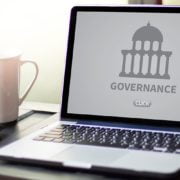Executives who take on an IPO ride a long and sometimes unpredictable wave from start to finish. There’s all the debate over whether going public is part of the company’s grand plan, when to make the move, how the business will be valued, and then—the part that most people overlook—the arduous journey after the Wall Street debut.
Is your company able to take on the ups and downs of going public and then actually being a public company?
A lot of senior leaders are asking that question—or should be—in our region. It’s an especially hot time for life sciences companies on the IPO track in the Bay Area. The industry is riding a “three-year wave of renewed Wall Street interest,” and a relatively high number intend to go public soon. Fast-track tech companies and the $1 billion “unicorns” topping the news are adding to the talk about an active market.
From the moment the company decides to forge ahead with going public through the year or two after the actual offering, there are lot of adjustments and transitions in store. What’s the difference between companies that achieve success and those that falter (from embarrassing restatements and miscommunications with investors)? It’s all in the preparation, it seems.
By getting some essentials done early on, companies can navigate the choppy waters that come with taking on such a huge transaction—and the onslaught of new work and expansive demands that come with it. In that multi-year period before and after going public, most companies face a whirlwind of change and a supercharged environment of employees learning new ropes, processes and systems, and everyone is having to dealing with a higher level of scrutiny. There’s a new mindset required and a whole slew of financial and legal requirements to handle.
Companies that are facing an IPO should be prepared to:
• Get their financial house in order if they haven’t already.
• Ready their financial accounting and reporting for maximum valuation and for a new class of investors.
• Review the finance team’s skills sets and consider what new skills should be brought in to the fold, and when. You need someone who has been there, done that.
• Accept that “being” a public company is different than going public, and that in some ways, the real work begins after the actual IPO.
An IPO is a pivotal moment in a company’s lifecycle, and it helps to be as prepared as possible. It can also be a bumpy ride unless you have a navigational guide.
Don’t miss our one-hour online webinar on August 6 to dig into this meaty topic. Senior Consultant Diana Gilbert, who leads the Technical Accounting Group at RoseRyan, will be joined by Matthew Rossiter, Partner at Fenwick & West LLP, and Susan Berland, Consultant, Finance & Strategy, as they lay out the course for IPO-bound companies in “Smooth Sailing for a Successful IPO” at 1 p.m. PST. To register for this webinar for companies contemplating or going public, visit our registration page: http://bitly.com/ipoaug6.
Want even more? Get RoseRyan’s series of reports for IPO-bound companies: IPO in Your Future?, Ensuring a Smooth Ride as a Newly Public Company, and The IPO Journey: 6 Potential Obstacles to Avoid for a Smooth Trip.




